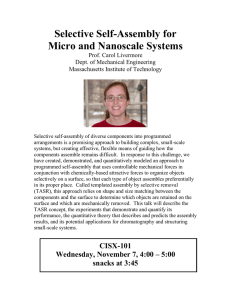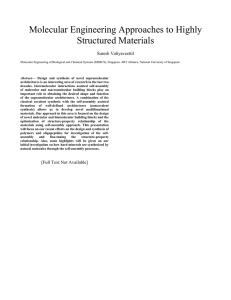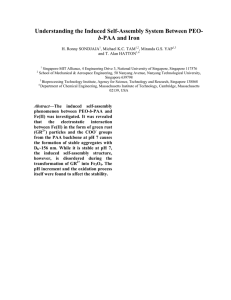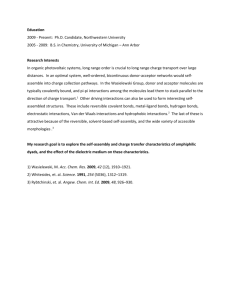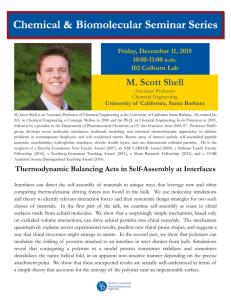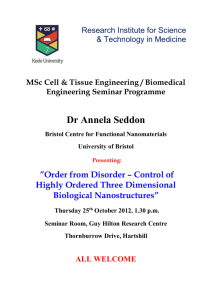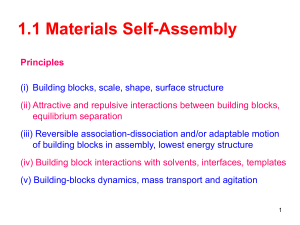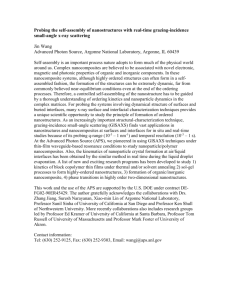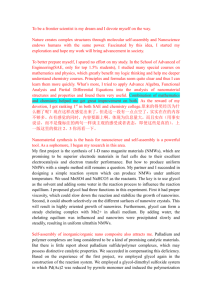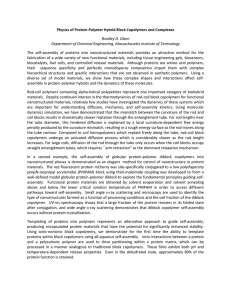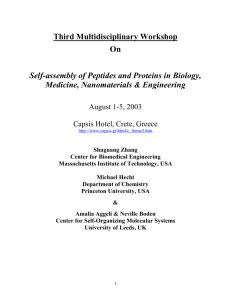dynamic process - Center for Bits and Atoms
advertisement
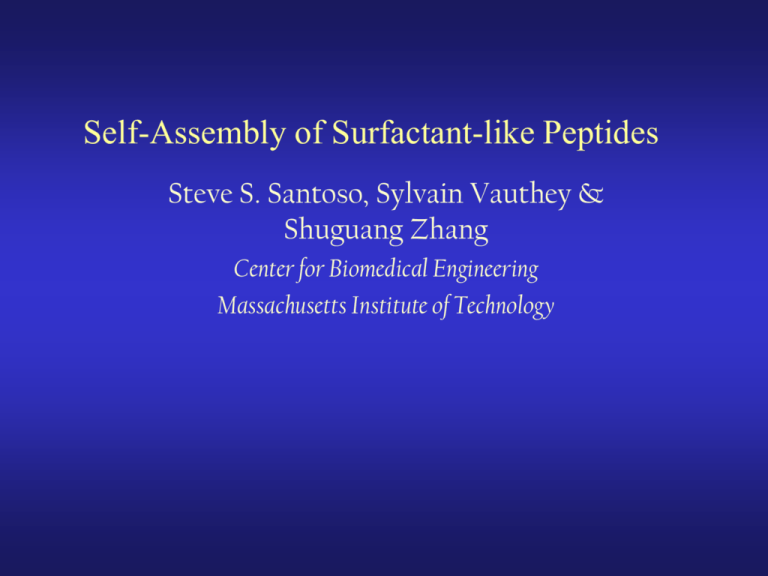
Self-Assembly of Surfactant-like Peptides Steve S. Santoso, Sylvain Vauthey & Shuguang Zhang Center for Biomedical Engineering Massachusetts Institute of Technology Nanostructures • Structures ranging from 1 to 100 nm • Sub-micrometer science and engineering that combine multiple disciplines: • • • • • Chemistry Biology Physics Material science Engineering • How to build / design nanostructures? • Want the atomic selectivity of synthetic chemistry yet the expandability of engineering • Molecular self-assembly may be useful Self-assembly processes common in biological systems: • Cell membrane • Multi-component cellular machinery: ribosome • Protein folding Self-assembly involves non-covalent bonding • van der Waals • hydrogen bonds • dipolar forces dynamic process Surfactant-like peptides [Ac]-VVVVVVD Six hydrophobic valines (tail) One polar aspartic acid (head) 2 nm Preliminary experiments and results • Some condition screening • Use: dynamic light scattering (DLS), TEM • Found larger structures for some conditions: Cryo-TEM: 300 nm Nanotubes are not the structure with energetic global minimum: Nanovesicle RF • Controlled delivery of small chemicals • Use nanovesicle to study replication of biological materials in an enclosed environment 150 nm 550 nm Summary • Peptide surfactants are promising substrates for advanced material and its application. • Cost-effective • Certain structures will form under certain environmental and chemical conditions • Tunable • Biological origin may be advantageous for medical application • A good system to study self-assembly.
